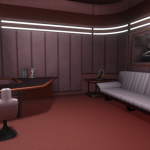Revitalize Your Space With Exquisite Restored Interiors – Click Now For A Stunning Transformation!
Restored Interiors: Reviving the Beauty of the Past
Welcome, Interior Enthusiast!
Are you a Home Lover who appreciates the charm and character of historical spaces? If so, you’re in for a treat. In this article, we will explore the fascinating world of restored interiors and how they bring new life to old spaces. Whether you’re an architecture enthusiast or simply curious about the history behind these exquisite designs, this article will provide valuable insights and inspiration for your own home. So, let’s dive in!
Table of Contents
What are Restored Interiors?
0 Picture Gallery: Revitalize Your Space With Exquisite Restored Interiors – Click Now For A Stunning Transformation!
Who Restores Interiors?
When Were Restored Interiors Popular?
Where Can You Find Restored Interiors?
Image Source: fbsbx.com
Why Choose Restored Interiors?
How Are Interiors Restored?
The Advantages of Restored Interiors
The Disadvantages of Restored Interiors
Frequently Asked Questions
Conclusion
Final Remarks
1. What are Restored Interiors?
Restored interiors are spaces that have been carefully renovated and revived to their former glory. These interiors often feature historical architectural details, such as ornate moldings, intricate plasterwork, and original flooring. The goal of restoration is to preserve the authenticity of the space while making it functional and comfortable for modern living.
2. Who Restores Interiors?
Restoring interiors requires a team of skilled professionals, including architects, interior designers, craftsmen, and historians. Each member contributes their expertise to ensure that the restoration process respects the integrity of the original design. Together, they bring their passion for preserving history and create stunning spaces that tell a story.
3. When Were Restored Interiors Popular?
The popularity of restored interiors has grown significantly in recent years, as people have developed a greater appreciation for historical architecture and design. While restoration has been practiced for centuries, it has experienced a resurgence in the 21st century. Many homeowners now seek out restored interiors to add a touch of timeless elegance to their spaces.
4. Where Can You Find Restored Interiors?
Restored interiors can be found in a variety of settings, from private homes to public buildings and museums. Some cities have entire neighborhoods dedicated to showcasing restored interiors, allowing visitors to step back in time and experience the grandeur of the past. Additionally, there are online platforms and publications that feature restored interiors, providing inspiration and resources for those embarking on their own restoration projects.
5. Why Choose Restored Interiors?
Restored interiors offer a unique opportunity to live or work in a space with a rich history. They allow us to connect with the past and appreciate the craftsmanship and artistry of bygone eras. Restored interiors also often feature high-quality materials and superior craftsmanship, ensuring longevity and durability. Furthermore, they contribute to sustainable living by repurposing existing structures and reducing the need for new construction.
6. How Are Interiors Restored?
The restoration process typically involves extensive research, documentation, and meticulous craftsmanship. It begins with a thorough assessment of the space, identifying any historical features that need to be preserved or repaired. Next, skilled artisans recreate missing or damaged elements, using traditional techniques and materials whenever possible. Finally, the space is carefully furnished and decorated to reflect the time period in which it was originally designed.
7. The Advantages of Restored Interiors
Advantage 1: Preservation of History – Restored interiors enable us to preserve and appreciate the architectural heritage of our ancestors. They serve as a testament to the craftsmanship and skills of earlier generations.
Advantage 2: Enhanced Aesthetics – Restored interiors often boast intricate details and unique features that are hard to find in modern constructions. They add a touch of elegance and sophistication to any space.
Advantage 3: Sustainability – By restoring existing structures, we reduce the environmental impact of new construction. Restored interiors contribute to a more sustainable future by recycling and repurposing historical buildings.
Advantage 4: Cultural Appreciation – Restored interiors allow us to immerse ourselves in the culture and history of a particular time period. They provide valuable educational opportunities and help us better understand our heritage.
Advantage 5: Increased Property Value – Restored interiors are highly sought after and can significantly increase the value of a property. Their uniqueness and historical significance make them desirable to buyers and collectors alike.
8. The Disadvantages of Restored Interiors
Disadvantage 1: Cost – Restoring interiors can be a costly endeavor, especially when dealing with extensive damage or rare materials. It requires a significant investment in terms of both time and money.
Disadvantage 2: Limitations on Modifications – Restoring an interior to its original state often means adhering to strict preservation guidelines. This can limit the flexibility of design choices and may not cater to individual preferences.
Disadvantage 3: Maintenance Challenges – Restored interiors may require more frequent maintenance and specialized care compared to modern spaces. Preservation of historical features and materials can be time-consuming and costly.
Disadvantage 4: Limited Availability – Restored interiors are not as readily available as new constructions. Finding the perfect space that suits your needs and preferences may require patience and persistence.
Disadvantage 5: Compatibility with Modern Living – Restored interiors may not always meet the practical needs of modern living. Careful consideration must be given to integrating modern amenities and technologies without compromising the historical integrity of the space.
9. Frequently Asked Questions
Q1: Can I restore my own interior?
A1: While some restoration tasks can be done by homeowners with the right skills and knowledge, it is generally advisable to consult with professionals to ensure the preservation of historical integrity.
Q2: How long does the restoration process take?
A2: The duration of the restoration process can vary depending on the size and complexity of the project. It can range from several months to several years.
Q3: Are restored interiors more expensive to maintain?
A3: Restored interiors may require additional maintenance and specialized care compared to modern spaces. However, the long-term value and cultural significance they bring often outweigh the maintenance costs.
Q4: Can restored interiors be customized to my taste?
A4: While the restoration process aims to preserve historical integrity, there is still room for customization. Design choices can be made to suit your personal taste, as long as they are mindful of the space’s historical significance.
Q5: Are restored interiors a good investment?
A5: Restored interiors can be a valuable investment, as they often appreciate in value over time. Their historical significance and unique features make them desirable to collectors and those seeking a one-of-a-kind property.
10. Conclusion
Restored interiors are a testament to the beauty and craftsmanship of the past. They allow us to connect with history, appreciate the cultural heritage of our ancestors, and add a touch of elegance to our modern lives. Whether you’re considering restoring your own interior or simply admiring the work of others, the world of restored interiors offers a treasure trove of inspiration and admiration.
11. Final Remarks
Embarking on a restoration project requires careful planning, research, and a team of skilled professionals. It is essential to consider the historical significance of the space and make informed decisions that respect its heritage. Restoring interiors is not just about reviving old spaces; it’s about preserving our collective history for generations to come.
Disclaimer: The information presented in this article is for educational purposes only and should not be considered as professional advice. The author and publisher disclaim any liability for any damages or losses incurred as a result of the use or misuse of the information presented herein.
This post topic: Interiors



